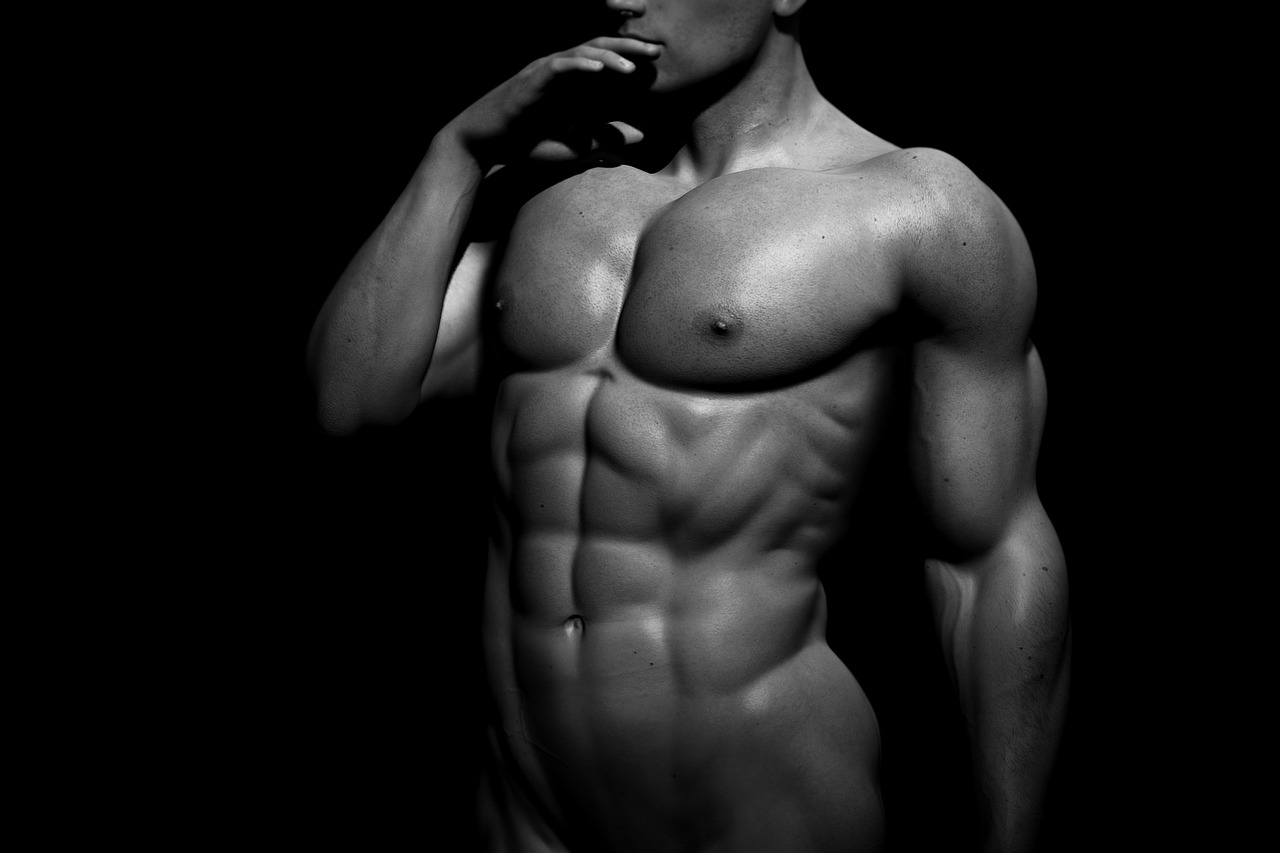Unleashing the Secret: How to Build Your Pectoral Muscle
Unleashing the Secret: How to Build Your Pectoral Muscle transforms your understanding of fitness by sharing the hidden techniques on muscle building, specifically targeting your chest muscles. If you’re on the quest for a more defined chest or aiming for a noticeable boost in your upper body strength, this article is tailored for you. Packing a punch with expert advice and a step-by-step guide on how to effectively enhance your pectoral muscle in 30 days, this article manifests that muscular grace you’ve been yearning for, backed by facts and frequently asked questions for a comprehensive approach.
Understanding the Anatomy of Pectoral Muscles
When looking at the front of your upper body, the muscles that stand out most prominently are often the pectorals. But what exactly are these muscles, and what role do they play in our body’s movement?
Primary muscles involved
The prominent muscles in your chest, the pectorals, are made up of two muscles: the pectoralis major and the pectoralis minor. The pectoralis major is the larger, more noticeable muscle. It spans across the upper chest from the shoulder to the breastbone. The pectoralis minor, on the other hand, is a smaller and narrower muscle located just beneath the pectoralis major. These two muscles work together to support a range of movements in your chest and arms.
Role of pectoral muscles in body movements
Your pectoral muscles allow you to perform a range of movements. From swinging your arms when you’re walking or running to pulling yourself up when you’re doing a pull-up, these muscles are pivotal for your upper body’s mobility. They also play a crucial role in maintaining body posture, and strengthening them can improve your overall physical capability.
Importance of Pectoral Muscle Development
Building up your pectoral muscles isn’t just about aesthetics. There are also plenty of functional benefits to having strong pec muscles.
Enhancing body posture
Strong pectoral muscles help maintain a good body posture. They can help combat the hunched shoulders often caused by sitting at a desk all day, ensuring you stand tall and aligned.
Boosting upper body strength
Building larger and stronger pectoral muscles can help to improve your upper body strength significantly. This not only allows you to handle heavier weights but also makes everyday tasks like lifting and carrying objects easier.
Improving athletic performance
From swimming to boxing, many sports involve the use of pectoral muscles. By strengthening these muscles, you’re likely to see a noticeable improvement in your athletic performance across the board.

Establishing Your Fitness Goals
Before you jump headfirst into your chest-building workout, it’s crucial to set realistic goals and establish a routine that fits your lifestyle.
Setting realistic expectations
As with any fitness journey, building your pectoral muscles takes time. Assess your current strength levels and set achievable short-term and long-term goals. This way, you’ll be motivated to keep progressing and will be less likely to give up.
Scheduling your workout routine
How often you work out depends largely on your personal schedule and fitness level. However, it’s essential to train your pectoral muscles at least two to three times a week for optimal results. Make sure to balance your chest workouts with exercises for other muscles to prevent imbalances.
Maintaining fitness discipline and consistency
Consistency is key in any fitness journey. Discipline comes in handy when you’re tempted to skip a workout or cheat on your diet. Having a solid fitness regime and sticking to it will ensure you reach your goals faster and more effectively.
Fundamental Exercises for Pectoral Muscles
There’s no shortage of exercises that can help you build your pec muscles. Here are some of the most basic moves.
Bench press
The bench press is one of the most effective workouts for your pectoral muscles. It targets your pectorals, but it also works out your triceps and shoulders.
Push-ups
Don’t underestimate the power of a push-up. This bodyweight exercise is perfect for targeting your pectorals, as well as your arms and shoulders.
Cable crossovers
Cable crossovers specifically target your pecs, allowing you to isolate and work these muscles without involving your arms.
Dumbbell flyes
Similar to the bench press, dumbbell flyes effectively work your pectorals. This exercise is done while lying on a bench, and it requires a good level of strength and control.

Advanced Techniques for Building Pectorals
Once you’ve mastered the basics, you can up your game with these advanced techniques.
Inclined and Declined bench press
By adjusting the angle of the bench, you can target different parts of your pectoral muscles. An inclined bench press targets your upper pecs, while a declined bench press works your lower pecs.
Pectoral fly machine
This machine allows you to perform a similar movement to dumbbell flyes but with increased resistance and improved control.
Chest dips
Chest dips are a more advanced bodyweight exercise, but they provide excellent results. They primarily target your chest muscles but also work on your triceps and shoulders.
Pullover exercises
Pullover exercises help to stretch the chest and pectorals, leading to increased flexibility and range of motion.
Utilizing Resistance Training
Resistance training can be a great way to build your pectoral muscles. It involves using resistance, like free weights or resistance bands, to build muscular strength and endurance.
Introduction to resistance training
Resistance training isn’t just for weightlifters. It can help improve your overall strength and endurance, promote muscle growth, and increase your metabolism.
Benefits of resistance training to pectorals
Resistance training allows for an increased load on the pectoral muscles, leading to more significant muscle growth over time. It also provides a broader range of motion than weight machines, leading to improved strength and flexibility.
Resistance exercises for pectoral muscles
There are several effective resistance exercises for your pectoral muscles. These include bench presses with resistance bands, cable crossovers with resistance bands, and resistance push-ups.

Promoting Muscle Growth through Nutrition
What you put into your body is just as important as your workout when it comes to muscle growth. A balanced diet can go a long way toward helping you build your pectoral muscles.
Balanced diet for muscle growth
A balanced diet is essential for muscle growth. Your diet should be rich in proteins, complex carbohydrates, and healthy fats.
Role of protein in building muscles
Protein is the building block of muscles. Consuming a protein-rich diet helps repair and rebuild the damaged muscle fibers, promoting muscle growth.
Importance of hydration
Hydration isn’t just important for general health; it’s also critical for muscle growth and recovery. Make sure you’re drinking plenty of water throughout the day.
Understanding the Role of Rest in Muscle Growth
Rest is often overlooked when it comes to muscle growth. However, it plays a crucial role in the process.
Importance of sleep for muscle recovery
Sleep is when most of your muscle recovery and growth happens. Getting enough sleep can promote muscle recovery and lead to significant muscle growth over time.
Incorporating rest days in your routine
Rest days give your muscles a chance to recover and grow. Make sure to include one to two rest days in your routine each week.
Listening to your body and avoiding overtraining
Overtraining can lead to injuries and burnout. If you’re feeling fatigued or notice a decrease in performance, it might be time to take a break.

Monitoring Your Progress
Keeping track of your progress can help you stay motivated and adjust your routine as needed.
Benchmarks for progress
Setting benchmarks for progress can be incredibly motivating. These could be strength goals, size goals, or even overall fitness goals.
Dealing with plateaus
In any fitness journey, plateaus can happen. If you notice that you’re not making progress, it might be time to change up your routine or take a break.
Making adjustments to your routine
If something isn’t working in your routine, don’t be afraid to adjust. This could mean adding more weight, changing up your exercises, or even incorporating more rest.
Frequently Asked Questions About Building Pectorals
How long does it take to build pectoral muscles?
Muscle growth takes time, and the timeframe will vary greatly from person to person. However, with regular training and proper nutrition, you could start seeing results within six to eight weeks.
Do genetics play a role in pectoral growth?
Yes, genetics can influence the size and shape of your muscles. However, with consistent training and proper diet, you can make significant changes regardless of your genetic predisposition.
How many times per week should I train my pectorals?
For optimal results, you should aim to train your pectorals two to three times per week.
What are signs of overtraining?
Symptoms of overtraining can include fatigue, decrease in performance, irritability, loss of appetite, and persistent muscle soreness.
How to build your pectoral muscle in 30 days?
Building significant muscle mass in 30 days is a challenging feat. It involves consistent training, proper nutrition, and adequate rest. It’s important to remember that everyone’s body responds differently to exercise, and what may work for one person might not work for another.


Pingback: How to Build Chest Muscle: A Comprehensive FAQ Guide – Lose Weight With Absolute Minimal Diet – Your All In One Guide to Weight Loss & Nutrition